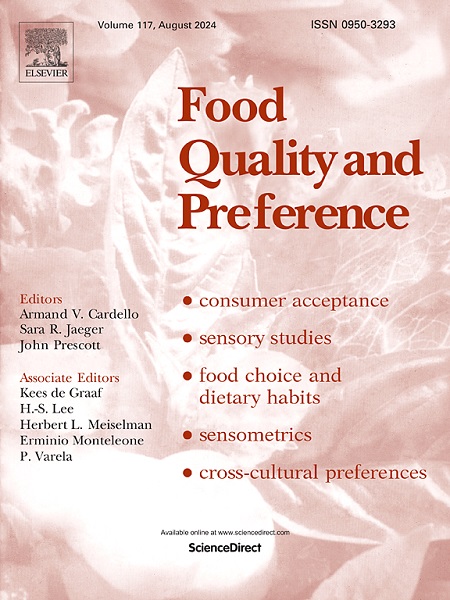Are healthy diets also sustainable? Experimental study using a Fake Food Buffet
IF 4.9
1区 农林科学
Q1 FOOD SCIENCE & TECHNOLOGY
引用次数: 0
Abstract
Interventions to promote healthy and sustainable diets are urgently needed to curb growing obesity rates and greenhouse gas emissions. To date, little is known about consumers' awareness of the co-benefits of healthy and sustainable diets. Studies furthermore lack a global perspective. This study therefore aimed (1) to compare the composition of sustainable, healthy, and typical meals using an experimental Fake Food Buffet (FFB) study and (2) to compare sustainable diet knowledge and perceptions between individuals who grow up in Global North and Global South countries. The experiment used a 3 Meal Type x 2 Region mixed design. Participants (N = 74), of which half grew up in the Global North and South, respectively, were asked to self-serve three meals (typical, healthy, sustainable) from the FFB and to complete the Food Sustainability Knowledge Questionnaire (FSKQ). Sustainable meals contained more vegetables, grains, legumes, and plant-based protein (Fs[2, 144] ≥ 4.26, ps ≤ .016), and less red meat, animal-based protein, and sugar than healthy or typical meals (Fs[2, 144] ≥ 11.77 ps ≤ .001). FSKQ scores did not differ between regions (W[71.82] = 0.58, p = .564). However, participants from the Global North self-served more vegetables, grains, and plant-based protein from the FFB compared to participants from the Global South (Fs[2, 72] ≥ 4.89 ps ≤ .003). Many people are not fully aware of the substantial overlap of healthy and sustainable diets. Furthermore, culture influences food choices and thus needs to be considered when designing and implementing dietary interventions on a global scale.
求助全文
约1分钟内获得全文
求助全文
来源期刊

Food Quality and Preference
工程技术-食品科技
CiteScore
10.40
自引率
15.10%
发文量
263
审稿时长
38 days
期刊介绍:
Food Quality and Preference is a journal devoted to sensory, consumer and behavioural research in food and non-food products. It publishes original research, critical reviews, and short communications in sensory and consumer science, and sensometrics. In addition, the journal publishes special invited issues on important timely topics and from relevant conferences. These are aimed at bridging the gap between research and application, bringing together authors and readers in consumer and market research, sensory science, sensometrics and sensory evaluation, nutrition and food choice, as well as food research, product development and sensory quality assurance. Submissions to Food Quality and Preference are limited to papers that include some form of human measurement; papers that are limited to physical/chemical measures or the routine application of sensory, consumer or econometric analysis will not be considered unless they specifically make a novel scientific contribution in line with the journal''s coverage as outlined below.
 求助内容:
求助内容: 应助结果提醒方式:
应助结果提醒方式:


